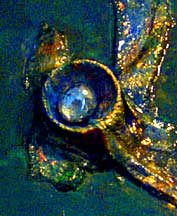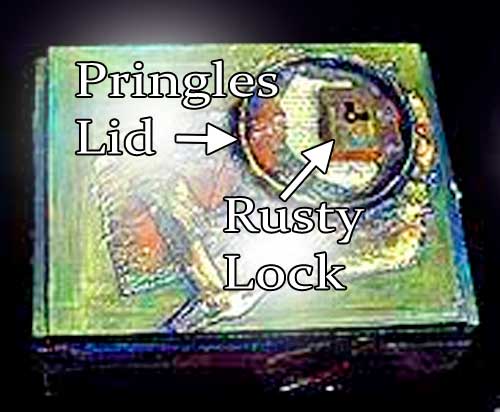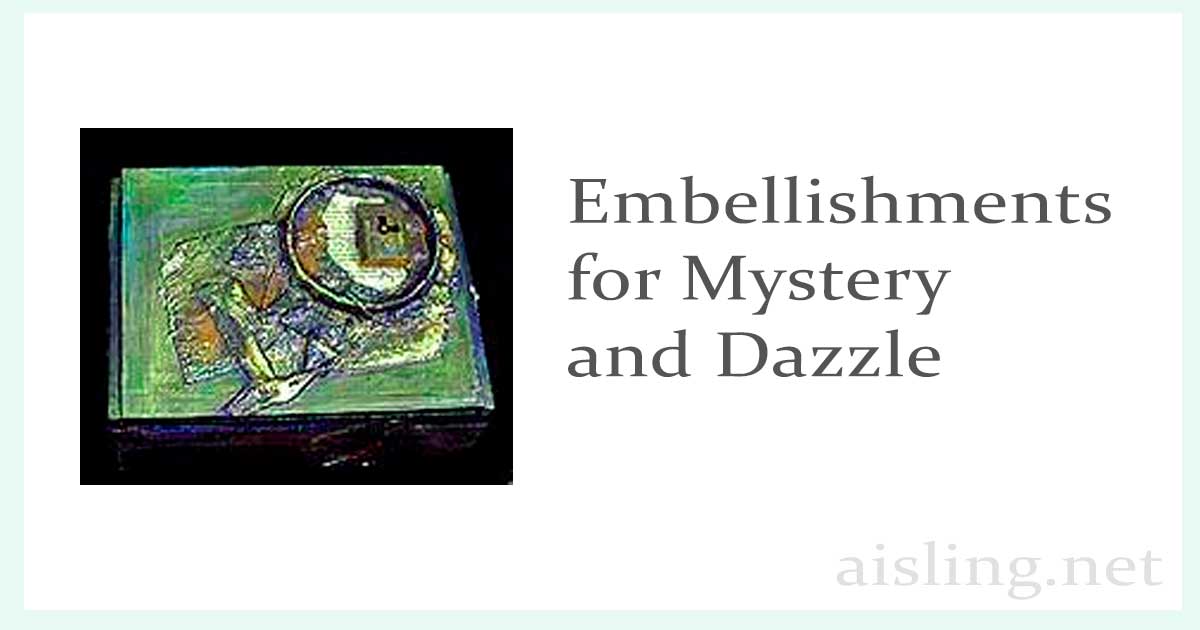Product links support this website. Details.
Plaster gauze is ideal for embellishing your art shrines and assemblages. Add gold foil, gold leaf, glitter, beads, vintage jewelry, crystals, or other features, and your art can really stand out!
Plaster Gauze
To learn the basics of using plaster gauze (or plaster plus gauze… generally the same product), see:
When using plaster-embedded gauze, you can create fabulous textural effects with common household and art objects.
Among my favorites are soft drink bottlecaps. Place one with the open side up, and drape the wet gauze over it. Press it around the shape, inside the cap, and leave enough gauze around the bottlecap to hold it in place on the shrine.
After it dries and you’ve painted the shrine, flat-bottomed glass beads and stones fit perfectly, one in each bottlecap. (My current package of those beads is labelled “Glass Decorative Gems.” They’re inexpensive and available at arts and crafts stores, budget import shops, and—of course—at Amazon.com.)
Here’s how it looks when finished:

However, you can use other supports for the gauze.
One of my favorites is a Pringle’s potato chip can lid. This creates a circular area with a lip that is perfect for putting the focus on an inset image, such as a religious icon, or small embellishments such as a rusty lock, etc.
I used a Pringle’s lid for the shrine at the top of this page.
You can also drape the gauze over wooden shapes such as stars, moons, a Celtic cross, numbers, letters, and so on. Check arts & crafts stores for inexpensive wooden cut-outs that will add interest to your shrine.
You might want an eerie effect, draping it over a doll’s face, similar to the “mummies” that were popular in art a few years ago.
There are an endless number of textured and dimensional objects to try under gauze. Check your toolbox, trash, or even your drawer of kitchen tools for ideas.
Remember two things:
- This gauze sticks to anything, including Altoid tins.
- And be sure to drape enough of it around the applied object so that it is held in place when the gauze dries.
Other Materials (like Pringle’s Lids)
Simple textures can be fun, but they can quickly bore the viewer. You may need to add additional materials and supports to create interest.
In this shrine, in addition to the Pringle’s lid support, I added a rusty lock (adhered with hot glue), a scrap of a vintage book page, plus several colors of acrylic paint, some of them metallic. And so on.
If you visit some antiques stores and flea markets, you’ll find wonderful items, often low-priced. The rusty lock and vintage papers I used here came from a flea market. Neither cost more than $5.
Here’s a close-up of the finished art, so you can see it better. (The original photo was from long ago, reduced for Internet limits back then, and I don’t have the larger version. So, this is a bit pixelated.)

Amazon and the Amazon logo are trademarks of Amazon.com, Inc, or its affiliates. As an author and affiliate, I may earn a small commission if you purchase anything through my links. That does not affect the item's price, and I only link to products that I use and like, myself.

